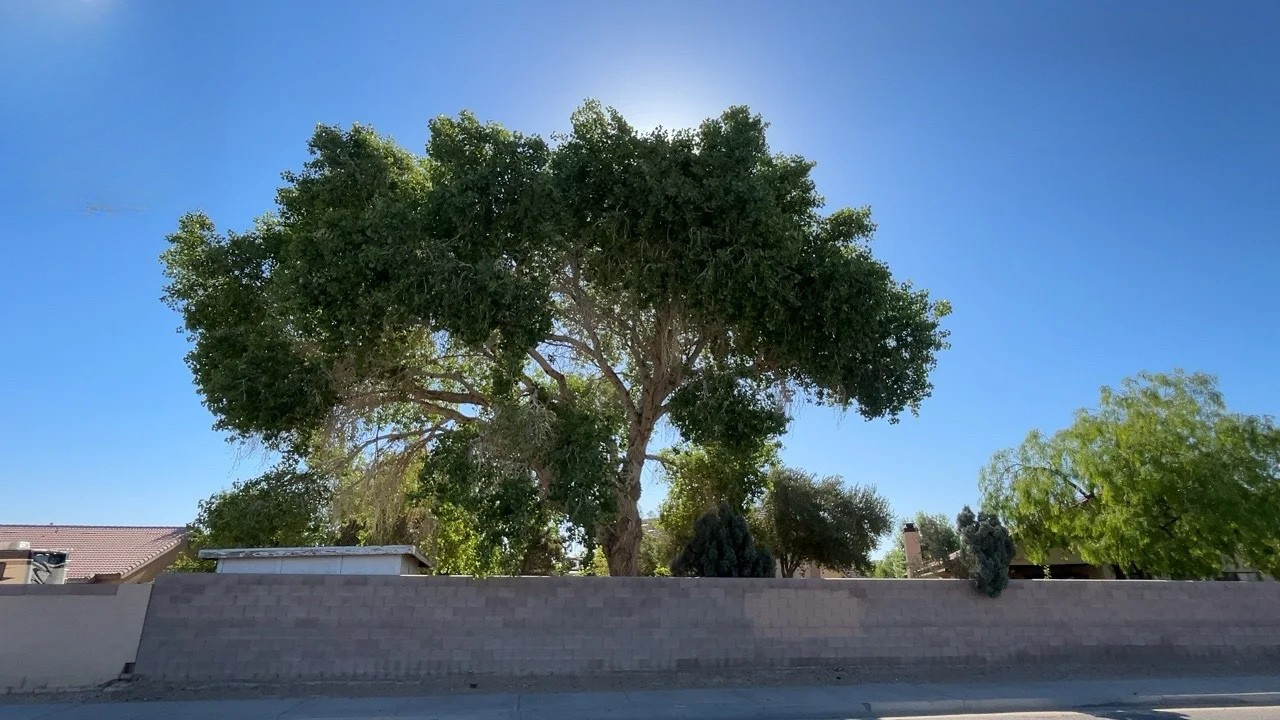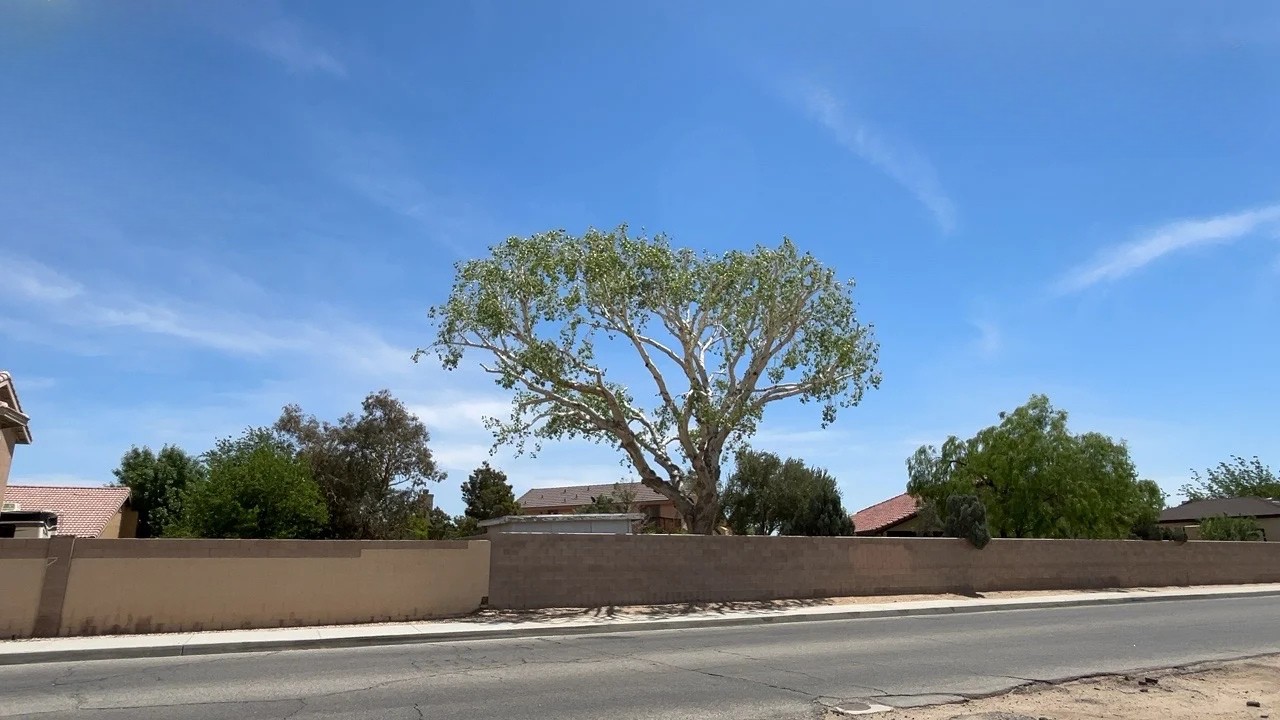Case Study: Tree Trimming in Lancaster, CA by Tip Top Arborists
In the sun-soaked neighborhoods of Lancaster, California, where shade is golden and tree limbs often grow wild, one residential property faced the kind of overgrowth that made it hard to enjoy the San Joaquin sunsets. Towering trees were darkening interiors, dropping clumps of leaves into gutters, and stretching branches way too close for comfort over rooftops.
But after one call to Tip Top Arborists, homeowners found relief—not just from the leafy mess, but the worry too. This case study shows how our certified crew tackled troublesome trees using strategic, safe, and species-aware trimming.
Serving Southern California since 1976, Tip Top Arborists is a fully licensed, insured, and ISA-Certified Arborist team. We serve Kern, Los Angeles, and San Bernardino counties with dependable tree care—from trimming and removal to diagnosis and long-term tree health plans.
Property Goals: Safety, Sunlight & Sanity
This family-friendly neighborhood in Lancaster features homes packed together with tall decorative ash and maple trees. The homeowner’s goal was straightforward—cut back branches scratching at the second-floor windows, get rid of low-hanging limbs, lighten the density to allow more natural light, and reduce messy leaf buildup near front porches and gutters.
Our Tree Trimming Process in Kern County
Tree trimming’s never about just cutting what’s in your way. It’s science, planning, and prevention. Here’s what we did step-by-step.
1. Certified On-Site Inspection
We began by sending a certified arborist to inspect not just surface-level overgrowth, but structural integrity, signs of disease, and potential conflicts near power lines. We discovered:
- Two ash trees too close to the home, shading windows and scraping siding
- A maple with signs of excessive water stress
- Several dead or dying limbs near the crown level
2. Prepping the Site
Before any branch was touched, our crew blocked off access points to footpaths with bright safety signage, laid down plywood boards to protect flower beds, and discussed equipment access since decorative boulders were scattered under the canopy.
3. Using the Right Equipment
Trimming is only as good as the gear behind it. Our team used:
- Bucket trucks for high-access pruning
- Handsaws and precision pole trimmers
- Chainsaws rated for low kickback operation
- Ground boards for landscaping protection
4. Precision Pruning
Following ANSI A300 standards, we carefully removed about 20% of the canopy—never topping or over-pruning. Our cuts focused on:
- Removing deadwood above patios and sheds
- Thinning interior limbs to reduce wind resistance
- Shaping form without compromising tree health
Before, During & After: Image Gallery


“Tip Top Arborists showed up exactly when they said they would. Not only did they clean up everything, they even checked our irrigation heads before leaving. It’s like the mess never happened, but now we actually enjoy our yard!” — Kern County Homeowner
Biggest Site Challenges
This job wasn’t without its quirks. The backyard had decorative rock beds, limiting room to maneuver bucket trucks. Wind conditions also picked up midday, creating scheduling pressure. But our crew adapted quickly—starting early mornings and using hand tools where lifts couldn’t fit safely.
“Every tree project is different, especially in desert cities like Lancaster where climate extremes stress root systems. We never cut corners, especially when kids play nearby.” — Lead Arborist, Tip Top Team
Safety Comes First—Always
Every job follows ANSI Z133 safety regulations. Our crew wore hard hats, face shields, protective chaps, and visibility vests. Beyond safety, we’re trained to protect regional wildlife—watching out for bird nests and native lizards common in Kern backyards.
Frequently Asked Questions
Q1: When is the best time to trim trees in Kern County?
A1: Late fall through early spring is ideal, when trees are dormant and less stressed by heat.
Q2: Do I need a permit for tree trimming?
A2: Typically no in Lancaster unless you’re working with protected tree species or fall under HOA or city landscaping rules.
Q3: How much does trimming cost?
A3: It varies—based on tree size, access, and risk factors. Estimates are always free with Tip Top.
Q4: Will trimming kill my tree?
A4: Not when done correctly! Over-pruning can hurt trees, but certified arborists know ideal cut ratios by species.
Q5: What signs of tree damage should I watch for?
A5: Look for peeling bark, deep splits, leaning trunks, or sudden leaf loss. These may signal serious issues.
Time for a Healthier Tree Canopy?
Let us shape your trees safely, beautifully—and on your schedule
Visit our Tree Removal Services page for more examples and educational resources.
